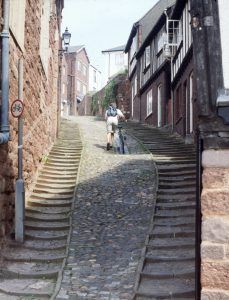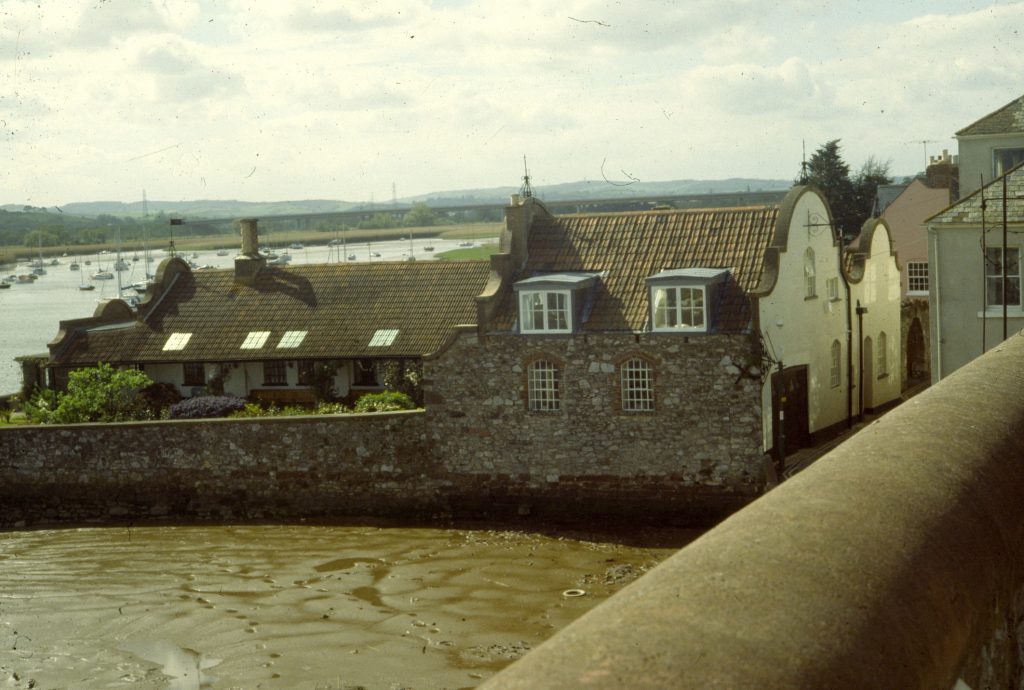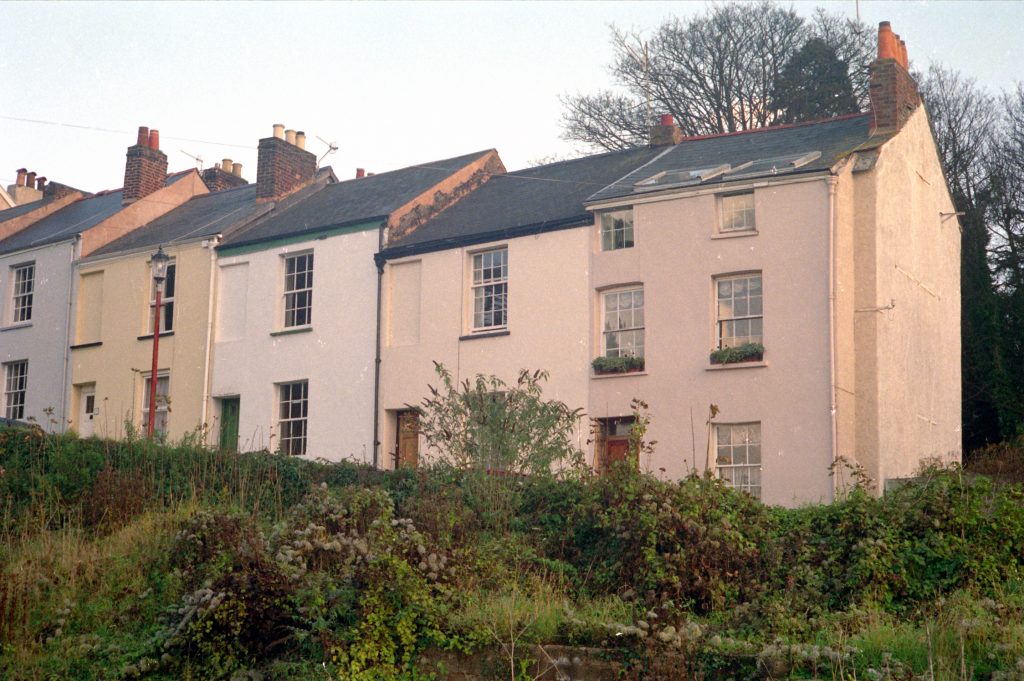Recently, I have been discussing various medieval English place names found in specific books of my West Country Medieval Mystery Series featuring my heroine, the Lady Apollonia of Aust. This month, I want to share reasons for my selection of Exeter as the setting of Plague of a Green Man, the second book in my series.
 I have mentioned earlier that the topics of those posts were about villages I had discovered in 1986-87 on trips to England to learn about my Aust Family heritage. We stayed in Topsham on our first trip. Topsham is now the southernmost part of the ancient city of Exeter and is located on the east bank of the River Exe over three miles south of Exeter’s city center. Our accommodation in Topsham, pictured above, shows the Dutch architecture of that village in medieval times
I have mentioned earlier that the topics of those posts were about villages I had discovered in 1986-87 on trips to England to learn about my Aust Family heritage. We stayed in Topsham on our first trip. Topsham is now the southernmost part of the ancient city of Exeter and is located on the east bank of the River Exe over three miles south of Exeter’s city center. Our accommodation in Topsham, pictured above, shows the Dutch architecture of that village in medieval times
This was our first introduction to the city of Exeter. Two years later, my husband, Lou, was exploring various English universities at which he might spend a sabbatical year. The best opportunity for him turned out to be as Visiting Professor in the Computer Science Department at Exeter University. From August 1988 to August 1989, we lived in Exeter and stayed most of that academic year in a delightful, terraced house facing the river Exe. It is the third-row house from the right as shown in the photograph below.
Lou had a long walk every day to the university, taking him right through the city center. Often, he walked past the medieval cathedral which became important in my life. Early in our stay in Exeter, we began attending Sunday services at the Cathedral Church of St. Peter which is shown below. I visited the cathedral church one day and volunteered to become a Monday steward, a person who greets visitors, answers questions, and helps them find anything in the church in which they might be interested. The head of the Monday stewards became my mentor, and I eventually began to give hour long guided tours to groups of visitors. Our year in Exeter was so wonderful that we wanted to return.
Lou returned to Exeter University in 1993 for another year as a visiting professor. This time we lived in an apartment, and I returned to Exeter Cathedral as a steward and tour guide. Although Lou retired from Valparaiso University in 1994, he returned to Exeter University for much of 1995 and I went back to the cathedral for stewarding and guiding. Indeed, we repeated this for many months again in 1998. Exeter had become a second home to us.
I finished Effigy of the Cloven Hoof in 2010. Its story was set in 1400 with some flashbacks to earlier periods in the life of Lady Apollonia. Our love of Exeter, from those four different years in which we lived there, inspired me to write a prequel to my first book entitled Plague of a Green Man, and set it in Exeter twenty years earlier in 1380.
The center of Exeter preserves much of its medieval heritage. Almost the entire medieval wall still stands, and although the medieval gates are gone, their locations go back to Roman times. A portion of the wall near the south gate is shown above. The street pattern within those walls was largely determined during the medieval period and earlier. The cathedral is the largest medieval building, and its interior was essentially completed before 1380. Thus, Lady Apollonia could get a tour of the great church in my novel not all that different from a tour that I might have guided thirty years ago.
Other medieval churches and the ancient Guild Hall survived the bombing of World War II. Some monastic buildings also survive, either intact or in ruins, and I have worked many of these into my story. There is a medieval street, Stepcote Hill, pictured on the right, and it too appears in the plot of Plague of a Green Man. Nearby places in Devon also appear in this novel, examples being: the wilds of Dartmoor and the quarries of Beer, a nearby coastal village.
Next time I would like to discuss Saint Apollonia for whom my heroine was named because I first encountered her image in Exeter Cathedral.



